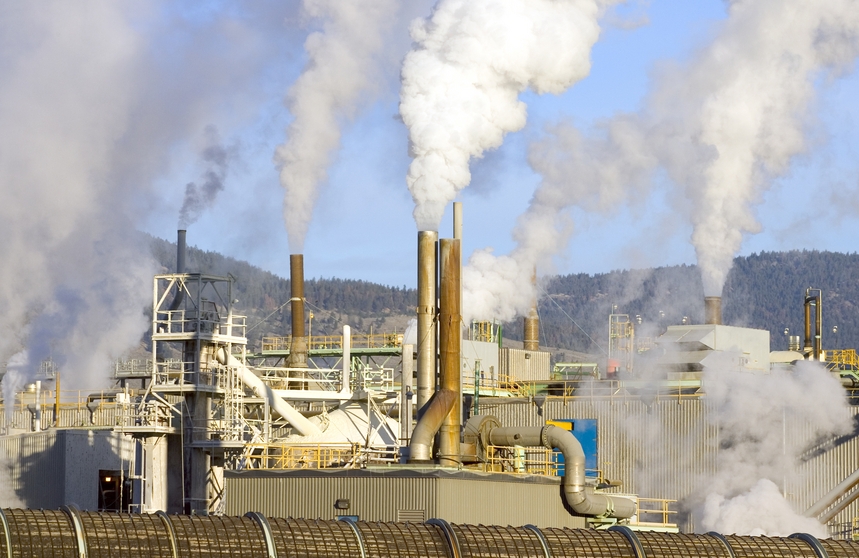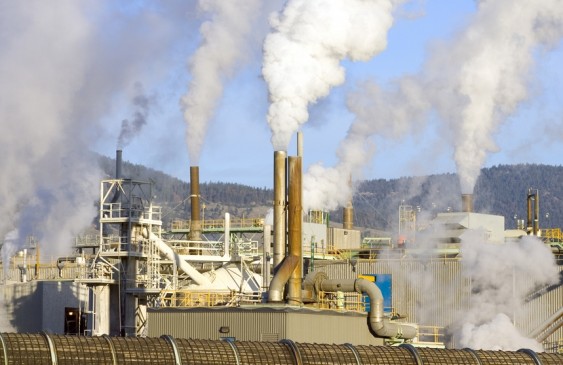Big Coal and Big Oil know that, in their business, political friends are worth their weight in gold. An academic study of one case of corporate lobbying estimated the return on investment at 22,000 percent: a dollar spent earned $220. Jack Abramoff, the convicted, influence-peddling super-lobbyist, pegged the return on investment of one project at 100,000 percent: $4 million dollars in lobbying cash purchased a $4 billion tax break for Tyco International.
Inspired by paybacks like those, the dirty-energy industry lavishes money on campaigns and lobbying. Not surprisingly, among its favorite sons are Rep. Joe Barton (R-Texas), who famously apologized to BP for Congress’s criticism during the Gulf oil disaster, and Sen. James Inhofe (R-Oklahoma), who insists the science of global warming is a hoax and has likened the US Environmental Protection Agency to the Gestapo. Rep. Barton has raked in $1,914,183 and Sen. Inhofe $1,287,950 from Big Coal and Oil—amounts that bring to mind social critic Upton Sinclair’s observation: “It is difficult to get a man to understand something when his salary depends upon his not understanding it.”
But what about Cascadia, with our hydropower and wind turbines, energy efficiency and smart growth? Does the lucre of Big Coal and Oil taint our delegation to Congress too? We pulled the numbers from the Dirty Energy Money Campaign, which compares recent Congressional votes on a dozen indicative energy policy issues with campaign contributions from fossil energy companies. The answer is unpleasant: even in the Northwest, Big Coal and Oil are dumping train loads of cash on our democracy—almost $5 million since 1999—and the main recipients are hewing to the dirty-energy line. These figures actually understate dirty-energy political money dramatically. They reflect campaign contributions made by energy companies and their key employees. They ignore contributions made by major investors in these companies and the huge sums of political money that filter to candidates or their election through the bank accounts of lobbyists, PACs, and Super-PACs. Think of these figures as the tip of the iceberg: the visible part but not the most dangerous part.
In the figure below, Cascadia’s representatives in the US House of Representatives and Senate appear by state and party. Their contributions since 1999 from coal and oil companies show up as the length of their bar, and the percentage listed with each bar displays the share of the time that they have sided with the fossil-fuel interests in twelve key votes. Seven of the top eight recipients of dirty-energy political dollars voted with Big Coal and Oil 100 percent of the time. Of the twelve who received the least dirty-energy money, nine never voted with Big Coal and Oil, two voted with them just once, and only one voted the Big Coal and Oil line.
In the Northwest, Alaska and Montana are the main oil and coal producers, and their delegates get the vast majority of political money from Big Coal and Oil. As the figure below shows, the average Alaskan member of Congress has received more than five times as much as the average Oregon member. Until recently, Washington and Oregon have not been major players in the fossil-energy industry; however, with the coal-export debate raging, more coal cash may infiltrate the states.
Contributions may also swing from oil to coal interests. In the past, oil—with its higher profits—has been the bigger gusher of political money, as the figure below illustrates.
Dirty-energy political money flows from a long list of companies. ExxonMobil leads the contributors to members of the current Congress, followed by Koch Industries and Chevron. Among the top ten (shown above) are also well known petroleum companies such as ConocoPhillips and BP. Less-familiar names include Fluor, which does engineering, construction, maintenance, and the like for big energy companies; it also does work at the Hanford Nuclear Reservation in Central Washington. The Southern Company owns power utilities that burn a lot of coal in Georgia and other southern states. Williams is a giant, Oklahoma-based natural gas company.
These ten companies accounted for about 30 percent of all dirty-energy political contributions made since 1999 to incumbent members of Congress from the Pacific Northwest. Each state has its own particular mix; for example, the top contributor in Montana is PPL, which does not support any politicians in Washington State. PPL, among other things, is part owner of the enormous Colstrip coal-fired power complex that sells electricity into Cascadia from eastern Montana.
Members of the Republican Party get three times more dirty-energy money than do Democrats. The average Republican hauled in over $300,000 in donations from Big Coal and Oil, with Alaska Senator Lisa Murkowski receiving the most at nearly $1 million, more than all contributions to Washington State’s senators and representatives combined. In contrast, Democrats averaged less than $100,000 each, a number that drops to $54,000 if we exclude Montana’s senior senator Max Baucus, who has received $661,000 since 1999.
If we were to take the standard view on this issue, we would expect a direct correlation between the amount of political money a politician received from Big Oil and Coal, and the way she or he voted on subsequent legislation. But as Lawrence Lessig establishes in his new book Republic, Lost, that’s not how money corrupts our democracy. The process is more subtle and ruinous: politicians, who spend more time fundraising than doing any other single waking activity, develop a sixth sense for their funders’ interests. Their positions on issues often lean toward money long before they even solicit contributions from a source. As former lobbyist Jimmy Williams observes, incumbents often reach out to lobbyists in order to finance their re-elections. Many use their voting record to demonstrate their commitment to the cause.
Not surprisingly, given the intense political polarization sweeping the United States, voting records correlated even more closely with party than dollars received. Ten of eleven Republicans voted with dirty energy 100 percent of the time, and the eleventh did so 58 percent of the time. Of the sixteen Democrats, thirteen voted against dirty energy every time, two did more than 90 percent of the time, and the last did 75 percent of the time.
The dirty-energy political money we’ve documented here is the tip of the iceberg. Our figures ignore the millions that companies and their owners give to lobbyists, PACs, and Super-PACs. It ignores contributions to state and local races and on ballot measures (such as this cynical and anti-democratic one). But even without a full view of the ledger, the conclusion is troubling: Big Coal and Big Oil have spent almost $5 million on campaign contributions to the current US Congressional Delegation from Cascadia, a region that prides itself as an emerging leader in the clean-energy economy.
Sources and notes: Data from the Center for Responsive Politics with additional analysis by Oil Change International. Throughout the article and in all figures, the contributions reported are total receipts since 1999 of the Northwest’s current Congressional delegation, including both US Senators and Representatives. No data were available for Rep. Susan Bonamici (D-Oregon), who only recently took the seat vacated by David Wu when he resigned in August 2011. One of the main contributors to politicians of both parties in all states was the National Rural Electric Cooperative Association. In much of the United States, rural electric coops support fossil energy. In Cascadia, however, they use primarily hydropower and have a mixed lobbying stance on fossil fuels. We therefore removed NRECA from the data set.
Guest contributor Japhet Koteen is a community builder, urbanist, and real-estate developer in Seattle.














Dan Bentler
I am tired of the carping on big business.
IF their money was worthless then they would have no impact.
Let our elected representatives
who are PAID by us taxpayers
do what they are supposed to do:
1. Be representatives of the people
2. Turn back big business money
3. Ignore lobbyists – for now ALL of them.
Japhet Koteen
Unfortunately, Dan, even politicians with the best intentions need money to win elections. As we pointed out in the article, the corruption of politics by money is much more subtle than a quid pro quo exchange; Lessig’s book does a great job of outlining the problem. I highly recommend it.
Bob Aegerter
There is no reasonable way to build a representative democratic government without lobbyists. Legislators need information. We need to limit the amount of money any one individual, corporate or human, may give to any one candidate and the system must be transparent.
Cass Martinez
We’re agreed on removing money from campaigns, and I’d just like to quibble about the difference between citizen lobbying and corporate lobbying.
Congress has OMB, CBO, GAO, BLS, NIH and so on to do unbiased research, and Congressional staff to do the district homework.
From tobacco denial to climate denial, I want corporate lobbying outa there.